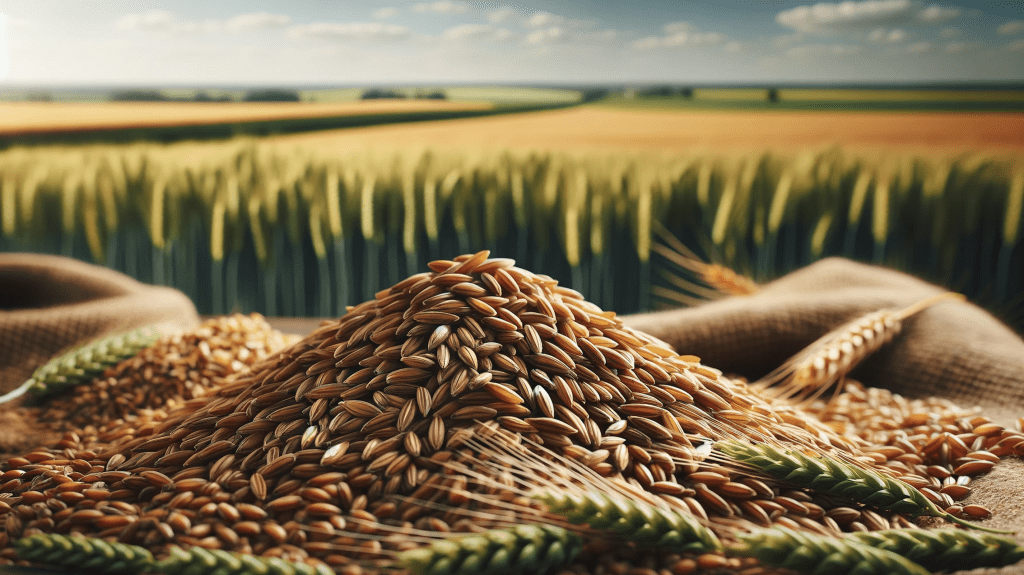Einkorn wheat, with its scientific name Triticum Monococcum, is an ancient grain that is considered one of the earliest cultivated forms of wheat. Here’s a detailed look at its origin, discovery, history, uses, consumption methods, nutritional benefits, and its role in sourdough bread:
Origin and Discovery
- Geographic Origin: Einkorn originated in the area known as the Fertile Crescent, a region in the Middle East that stretches from modern-day Iraq through Turkey, Syria, Lebanon, Israel, and Jordan. This region is often referred to as the “cradle of civilization” and was a hotspot for early agricultural development.
- Archaeological Findings: Einkorn has been found in some of the earliest farming sites. Evidence of einkorn wheat has been discovered in archaeological sites dating back over 10,000 years. These findings indicate that einkorn was one of the first domesticated crops as humans transitioned from a nomadic hunter-gatherer lifestyle to settled agriculture.
Usage and Consumption
- Historical Usage: Historically, einkorn was a staple grain for early civilizations. It was used to make flatbreads, porridges, and ale. As more easily cultivable and higher-yielding wheat varieties were developed, einkorn’s popularity declined.
- Modern Usage: Today, einkorn is experiencing a resurgence in popularity, especially among artisan bakers and in the health food community. It’s used in a variety of products, including bread, pasta, crackers, and cereals.
- Culinary Applications: Einkorn has a nutty flavor and can be ground into flour for baking. It’s particularly popular for use in rustic breads, pancakes, and pastries.
Nutritional Benefits
- Nutrient Profile: Einkorn is nutritionally dense. It is higher in protein, essential fatty acids, phosphorus, potassium, vitamin B6, and beta-carotene than modern wheat.
- Digestibility: Some people who are sensitive to modern wheat find einkorn more digestible, although it still contains gluten.
- Antioxidants: Einkorn has a high level of lutein, an antioxidant that is beneficial for eye health.
Einkorn in Sourdough Bread
- Sourdough Adaptation: Einkorn can be used in sourdough bread, offering a unique flavor profile. Its gluten structure is different from modern wheat, which can affect the texture of the bread.
- Handling Characteristics: The gluten in einkorn is weaker and more delicate, so it requires careful handling during the sourdough bread-making process. Overmixing or over-kneading can lead to denser bread.
- Hydration Levels: Einkorn flour tends to absorb less water than modern wheat flour. Bakers may need to adjust hydration levels in their sourdough recipes when using Einkorn.
- Flavor Contribution: Einkorn sourdough bread often has a rich, nutty, and complex flavor, which is distinct from bread made with modern wheat.
The revival of Einkorn wheat in modern baking, particularly in sourdough, is a delightful blend of ancient tradition and contemporary culinary exploration. Its unique flavor, texture, and nutritional benefits make it a worthwhile venture for sourdough enthusiasts. As you embrace the challenges and joys of baking with this ancient grain, remember that each loaf is part of a rich, 10,000-year-old history.
Thank you for joining us on this journey at The Sourdough People, where the past and present of baking come together in every slice. Happy baking!





















